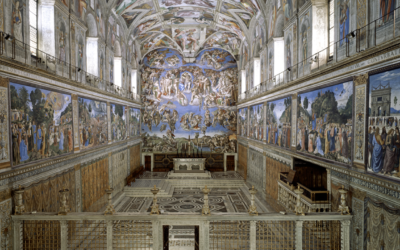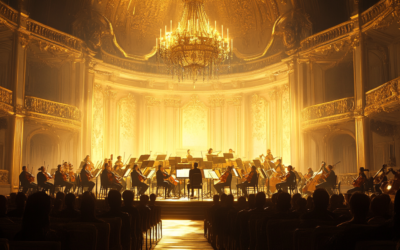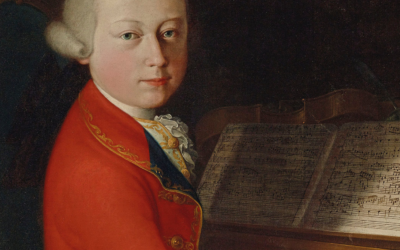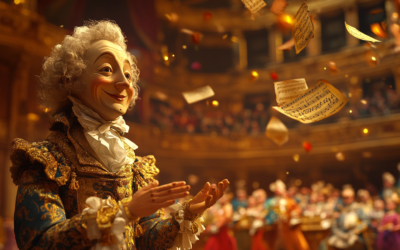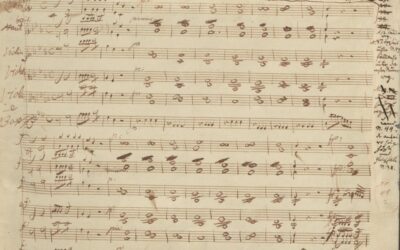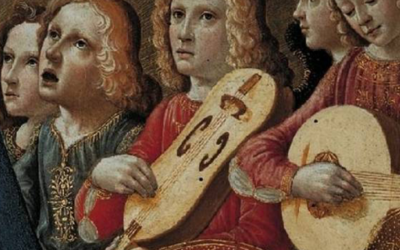K.143
A Recitative and Aria in the Shadows of Doubt
Ergo interest, Quaere superna—a Latin recitative and aria in G major, supposedly by the young Wolfgang Amadeus Mozart. It is catalogued as K.143 (73a), but its attribution is fraught with uncertainties that would make even the staunchest Mozart devotee hesitate. This “work” is a case study in how musicology has built entire legends on quicksand, blithely ignoring gaping holes in the narrative.
Mozart in Italy: The Untold Story
Was Mozart truly a solitary genius, or was he merely the instrument of his father’s ambition? “Mozart in Italy” challenges the conventional narrative, revealing a complex dynamic between father and son that shaped the course of music history. Prepare to question everything you thought you knew.
“Sometimes, the most convincing attribution is simply the one no one dares to question.”
Mozart in Italy
A Patchwork of Guesses
The sole surviving manuscript, housed in the Library of Congress, is attributed to Mozart with more hope than evidence. Key details are conspicuously absent: no date, no clear author, no definitive instrumentation. Even the watermark of the manuscript, often a vital clue for authentication, has vanished. Adding to the enigma, there are no other copies or printed editions, and the identity of the text’s author is unknown.
Yet, the piece was included in the first Köchel catalogue with a speculative date: Salzburg or Milan, 1772–1773. This guesswork has since ossified into “fact” for many scholars. But here’s the kicker: the manuscript is a so-called “fair copy,” combining the handwriting of both Wolfgang and Leopold Mozart. The pristine condition of the manuscript screams preparation for presentation, not original composition. Are we really to believe that this uninspired recitative and aria were the work of the teenage prodigy at the height of his creative vigor?
The “Gentle Melodic Contours” of… Someone Else?
Advocates for Mozart’s authorship point to a letter Leopold Mozart wrote in Milan on February 3, 1770, where he mentions two motets composed by Wolfgang for castrati. However, the stylistic features of K.143 reveal nothing uniquely Mozartian. Instead, the music adheres rigidly to the Italian church style of the period, showing “hardly any individual traits.” This blandness alone should raise eyebrows. Could this be a rushed transcription of another composer’s work? The suggestion, while plausible, has been curiously dismissed without serious consideration.
Some argue that Mozart’s copies of sacred works often served pedagogical purposes. But K.143 lacks the depth or ingenuity to justify such an effort. Why would a budding genius waste time copying an uninspired motet? The piece neither challenges compositional norms nor offers any discernible expressive innovation.
The Elephant in the Room
What if K.143 isn’t Mozart’s at all? This hypothesis—likely the most straightforward explanation—has been conveniently ignored. Why? Because it challenges the sacrosanct image of Mozart as a prodigious composer, churning out masterpieces at every turn. Yet the evidence (or lack thereof) makes a compelling case: K.143 is probably a sloppy patchwork cobbled together by Leopold, using Wolfgang’s handwriting to pass it off as the son’s work. This would not be the first time Leopold blurred the lines of authorship to advance his son’s career.
The refusal to entertain this possibility exposes the bias entrenched in Mozart scholarship. Instead of grappling with the uncomfortable uncertainties surrounding K.143, musicologists have leaned on circular reasoning and vague stylistic comparisons to maintain its place in Mozart’s oeuvre.
A Final Note of Dissonance
K.143 serves as a stark reminder of how little we truly know about Mozart’s catalog. If this uninspired piece can be so confidently attributed to him without solid evidence, how many other “Mozartian” works are similarly dubious? Perhaps it is time to admit that the emperor—or in this case, the child prodigy—might not always have been wearing any clothes.
You May Also Like
The Legend of Mozart’s Miserere
The enduring popularity of the narrative surrounding Mozart’s Miserere highlights the allure of the prodigy myth, but as we peel back the layers, we uncover a more nuanced picture of his life and the musical landscape of the time. The reality often contrasts sharply with the romanticized tales that have shaped our understanding of his genius.
Rediscovering Musical Roots: The World Premiere of Gasparini and Mysliveček
This December, history will come alive as the Camerata Rousseau unveils forgotten treasures by Quirino Gasparini and Josef Mysliveček. These premieres not only celebrate their artistry but also reveal the untold influence of Gasparini on Mozart’s Mitridate re di Ponto. A pivotal event for anyone passionate about rediscovering music history.
The Curious Case of Mozart’s Phantom Sonata
In a striking case of artistic misattribution, the Musikwissenschaft has rediscovered Mozart through a portrait, attributing a dubious composition to him based solely on a score’s presence. One has to wonder: is this music really Mozart’s, or just a figment of our collective imagination?
The Illusion of Canonic Mastery
This post explores the simplistic nature of Mozart’s Kyrie K.89, revealing the truth behind his early canonic compositions and their implications on his perceived genius.
The Unveiling of Symphony K.16
The Symphony No. 1 in E-flat major, K.16, attributed to young Wolfgang Mozart, reveals the complex truth behind his early compositions. Far from the prodigious work of an eight-year-old, it is instead a product of substantial parental intervention and musical simplification.
The Cibavit eos and Mozart’s Deceptive Legacy
The Cibavit eos serves as a striking reminder that Mozart’s legacy may be built on shaky foundations, questioning the very essence of his so-called genius.


